Car air bags have proven their usefulness countless times. Research conducted in the USA by National Highway Traffic Safety Administration estimates that as of 2017, over 50,000 lives have been saved by frontal airbags. Designed to work with a seatbelt, they reduce the risk of serious head injury among drivers by 85 percent. But what about cyclists and bikers? Wearable airbags help protect them from accidents and crashes as well. Protective gear include inflatable trousers, a backpack that doubles as an airbag, and a bike helmet that deploys as a cushioned hood.
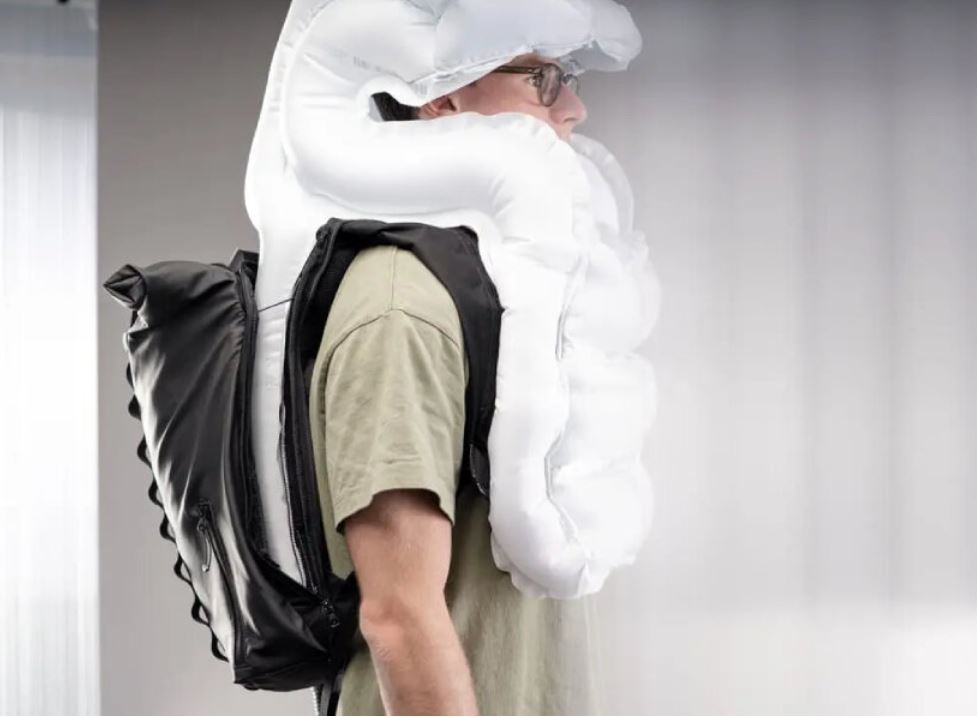
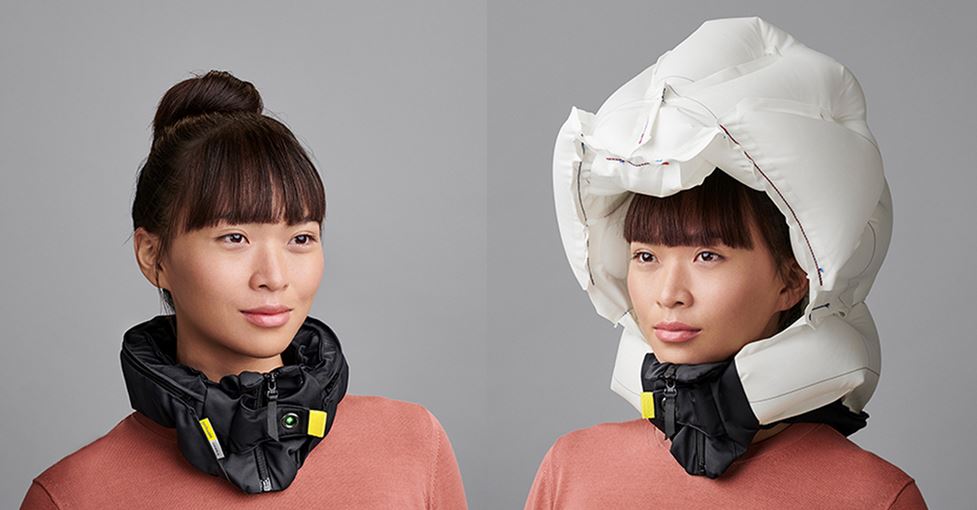
Inflatable cycling helmet by Hövding
According to scientific studies conducted at Stanford university, the airbag technology developed by Swedish brand Hövding is 8x safer than traditional bicycle helmets. Billed as the world’s safest cycling helmet, the design comprises a collar-like device containing an airbag that activates in the event of a crash. Once the helmet detects abnormal movement caused by an accident, it only takes 0.1 seconds to inflate forming a protective hood around the head and neck.
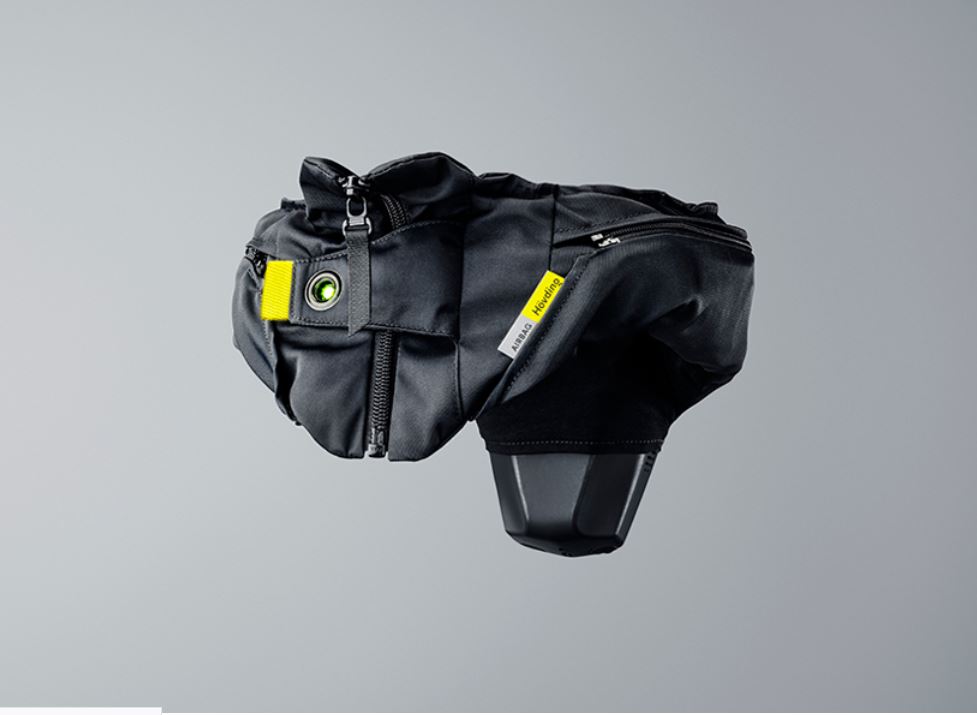
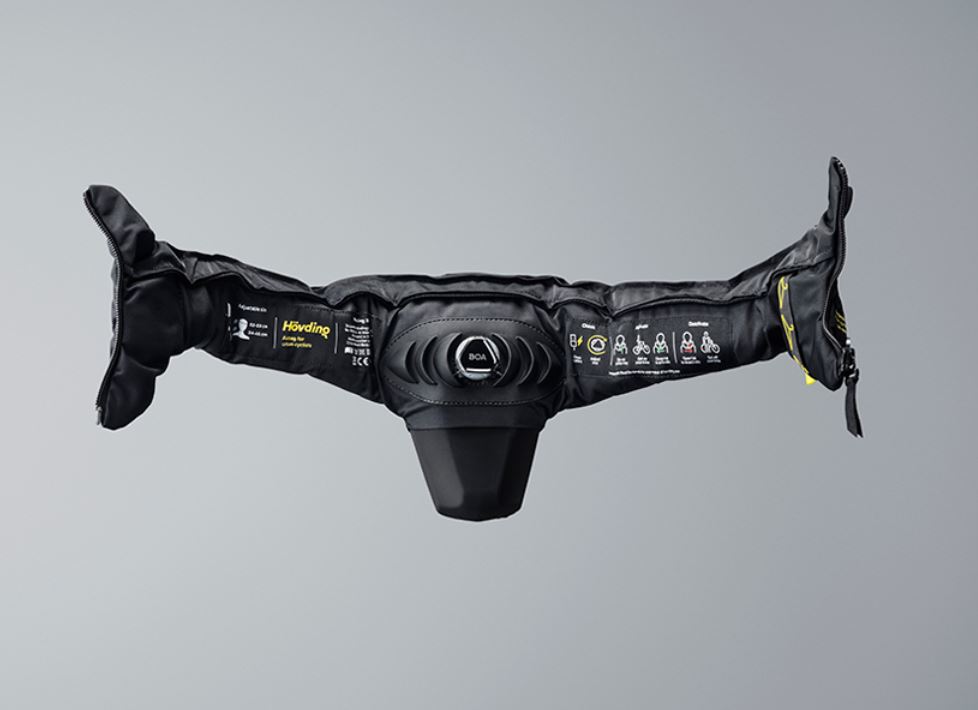
Inflatable cycling helmet by Hövding
The model comes in one size and with a BOA dial at the back of the collar, so the user can adjust it for a comfortable fit. The cyclists can effortlessly put it on using a zipper fastening at the front, taking off is just as easy.
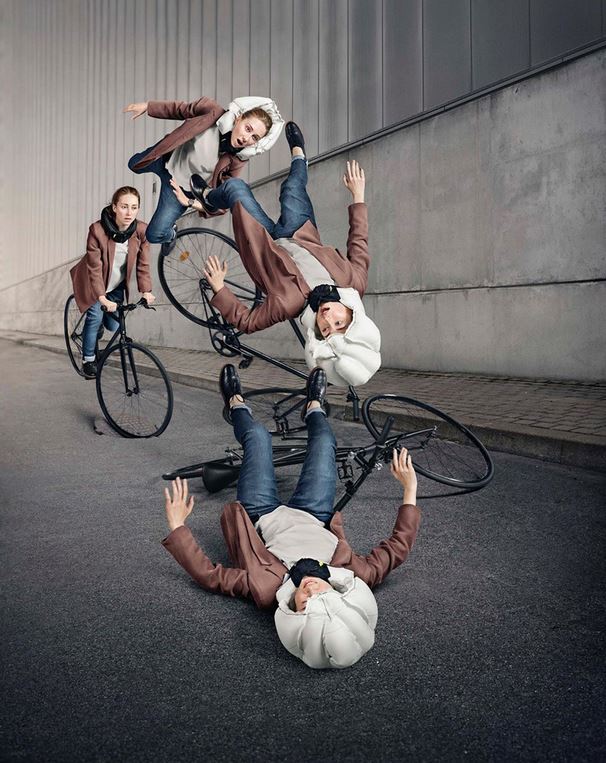
Inflatable cycling helmet by Hövding
The upgraded, third generation of the helmet can connect to the user’s smartphone via Bluetooth to access an IOS and Android compatible app that collects data on where accident occur most often to petition for better infrastructure in those areas. It also allows riders to contact people in case of emergency.
According to the Hövding website, it is the third generation of the helmet and over 185,000 bikers have already begun using the product.

STAN Airbag by In&Motion (also header image)
While helmets can protect heads of those riding a bike, other parts of their bodies might suffer from the accident. Concerned by this fact, French company In&Motion has developed STAN, a parachute-like airbag/backpack that deploys in a fraction of a second to cover the cyclists’ and bikers’ the most exposed and vital areas of the bodies – not just heads, but also backs, chests, and necks. The team claims that the protective gear reduces the risk of head trauma by 80 percent.
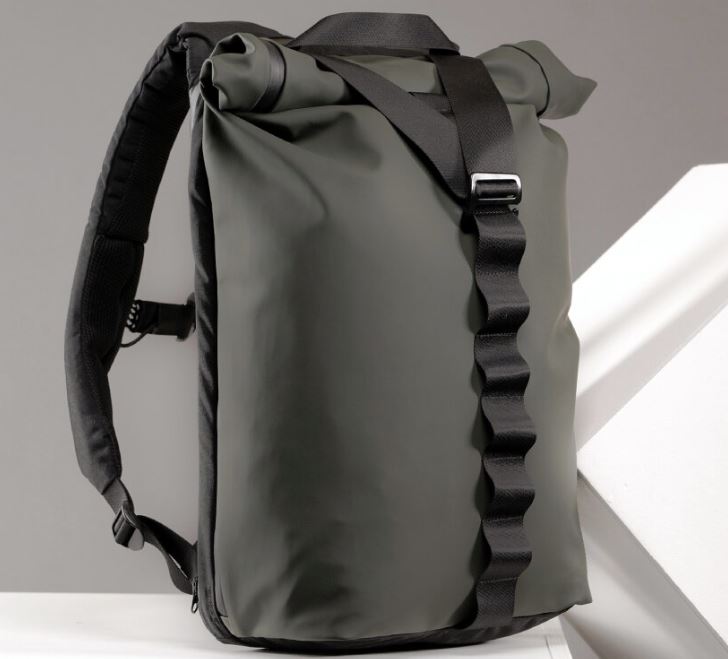
STAN Airbag by In&Motion
When deflated, STAN is as flat as a regular backpack and can actually be used as such. There are separate compartments for laptops, smartphones, accessories, and even a bottle of water. But in case of an emergency, the product takes just 0.1 seconds to transform into a bouncy cushion-like airbag.
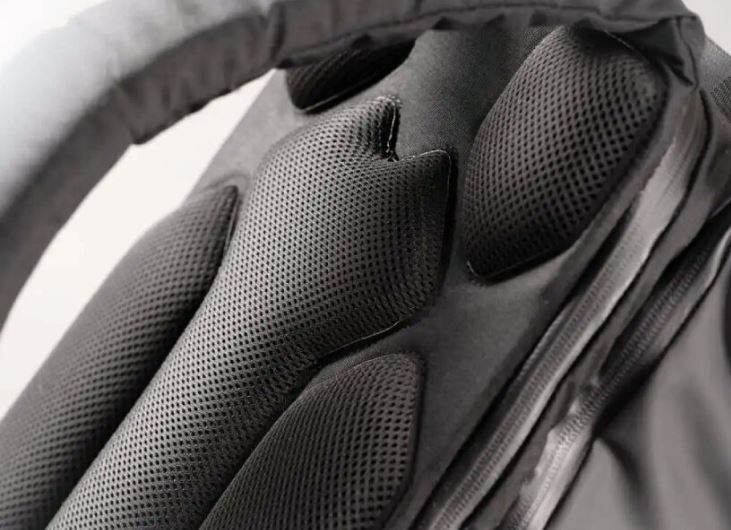

STAN Airbag by In&Motion
On top of that, as soon as the accident occurs, the 24/7 emergency-call system integrated into the bag alerts emergency services closest to the area using the dedicated app. This enables the injured user can get medical help without needing to call an ambulance.
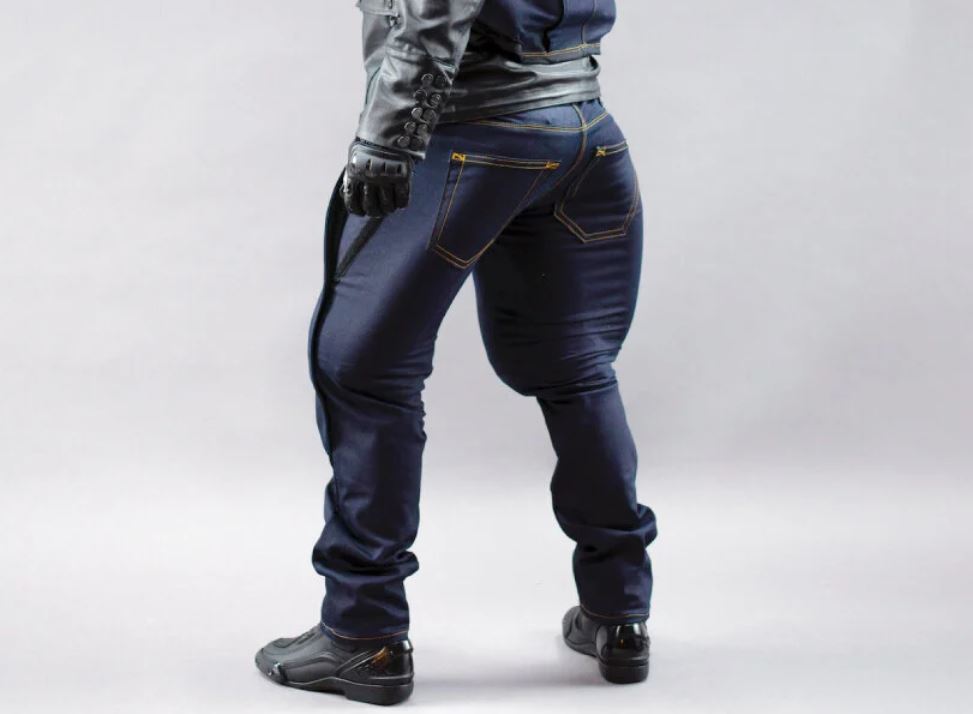
Airbag jeans from Mo’cycle
Swedish company Mo’cycle is aware that conventional motorcycle jeans offer protection for knees and hips leaving the rest of the lower body unprotected from injuries. This led them to developing airbag jeans that inflate when triggered during impacts when the rider falls off their vehicle. Airbag cushions wrap the biker’s body absorbing, as the team claims, tenfold the impact energy compared to traditional pads.
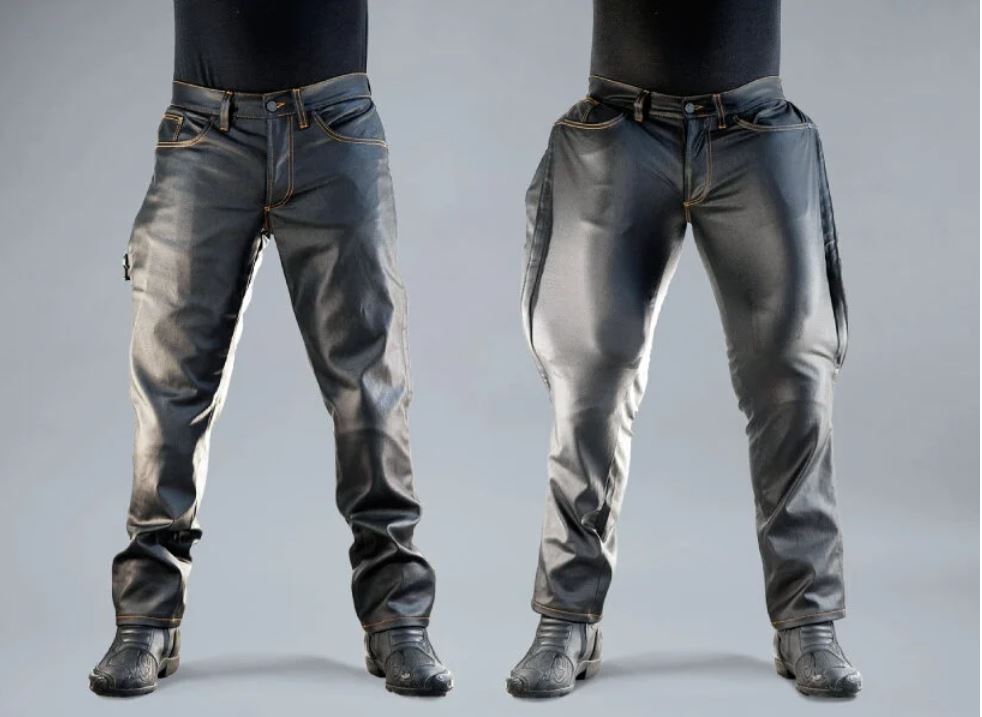
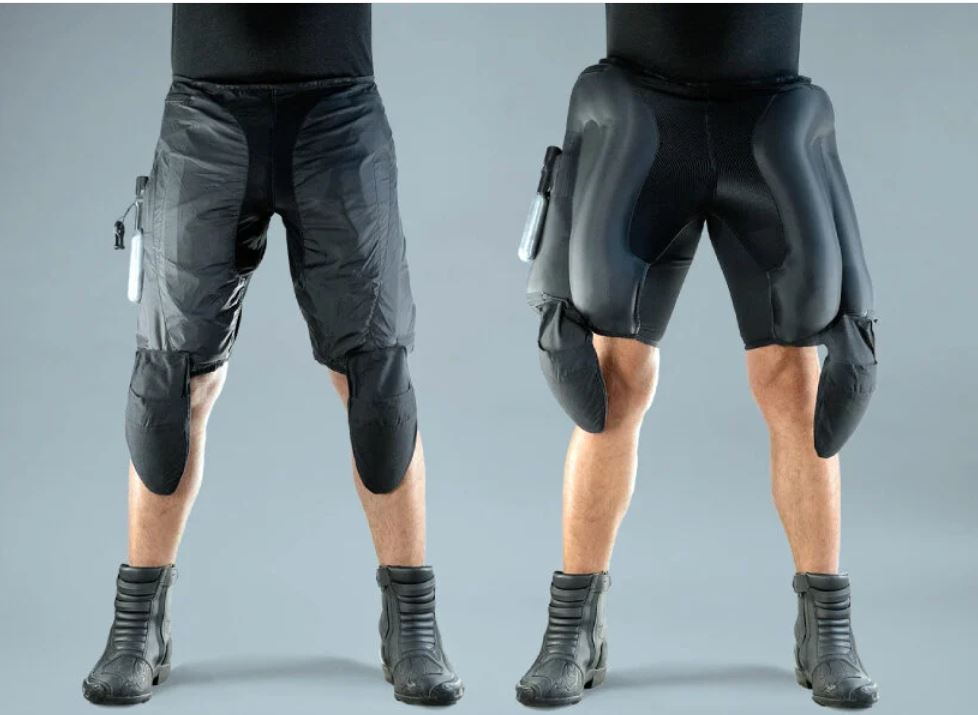
Airbag jeans from Mo’cycle
The jeans is made using a sturdy denim material named Armalith, which is believed to be stronger and lighter than steel. The Armalith technology is utilized on the fiber level, a blend of fibers (including UHMWPE) is ring spun and blended to achieve the extreme abrasion resistant properties, while at the same time being stretchy and resemble regular denim fabric. The user can reuse the airbag module and toss the jeans into the washing machine, which makes the garment reusable. The item can be used as regular jeans before inflation.
The airbag protects previously exposed portions of the lower body, such as the thighs, the back of the torso, and the tailbone, the first bone of the spinal column, which is especially important for spinal column injuries are what paralyze motorcycle riders.